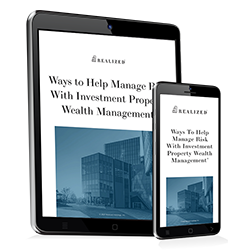
When looking at your portfolio of investments, can you recall why you choose those particular investments? Was it because of income or appreciation potential? Maybe it was because someone said it was a good investment? Or did you choose it based on your risk tolerance?
If you aren’t sure what risk tolerance is, it’s an investment risk profile that aligns your risk preference with the proper investments. That might sound like a mouthful, but we’ll unpack it in this article.
Are You Investing Properly?
Risk tolerance is a measure of the amount of risk that you can take. Technically, risk is the degree in the variability of returns that an investor can tolerate. At some point, returns may fluctuate up or down enough that the investor says uncle. Those investments that go past the uncle point may not be suitable for the investors with a high risk tolerance.
You don’t have to put together a portfolio of investments, though, just to watch its value fluctuate before you can determine your risk tolerance. There are simpler ways to determine risk tolerance.
Financial advisors help their clients determine some level of risk tolerance. It is often done through a questionnaire or discussions. The client may speak about previous experiences when they felt uncomfortable with their investments. Some of those experiences might be related to specific stocks or a market downturn.
The advisor will factor this information into a risk profile for the client. If the client doesn’t like large drawdowns in portfolio value, they may be better suited to lower-income but more stable assets. We would say this client has a low-risk tolerance.
Some clients don’t mind the wild swings in their portfolios. They are after higher returns and appreciation. These investors take on excessive risk for higher expected returns. In this case, the client has a high-risk tolerance.
Components of Risk Tolerance
Risk tolerance doesn’t mean taking on more risk. It’s about understanding why you’re taking on the risk that you are. Let’s assume that you’ve worked with a financial adviser to create a portfolio. Suppose the investments in your portfolio are property allocated and align with your goals. In that case, it means you’re taking on an expected amount of risk (i.e., you have a tolerance to the amount of risk in your portfolio).
In other words, you aren’t taking on excessive risk to reach your goals sooner. The risk level in your portfolio reflects your risk tolerance and aligns with your goals within a specific timeframe.
Setting goals is an important component in determining risk tolerance. Having your goal in sight helps keep you from taking money out of the market during a downturn. The market will fluctuate in the short-term, but your portfolio allocation is set to reach your long-term goal. Short-term wiggles don’t matter.
Your goal’s time horizon is another important component of risk tolerance. If you are 25 years old and your goal is a comfortable retirement, there’s a lot of time to reach that goal. If you are 60 years old and you are just starting to save for retirement, but you have a low-risk tolerance, expectations about what is achievable may need to be reset simply because of the short timeframe involved.
Risk tolerance helps to determine your willingness to take risks. From there, you can create a portfolio that matches your willingness with a practical time horizon. Finally, you can determine if you can reach your goals or if more adjustments need to be made.
Levels of Risk Tolerance
Risk tolerance can be broken down into several levels. These levels reflect the level of risk an investor is willing to take. If you’ve worked with a financial advisor, these levels may look familiar to you.
- Conservative — Risk averse. This investor is likely to have a portfolio made up of fixed income assets that have stable prices. Their portfolio is not likely to experience large swings in value.
- Moderate — Sits between the conservative and aggressive investor. This investor is investing for longer-term goals such as a child’s education or retirement. The portfolio is allocated to some risk assets, creating fluctuations in value.
- Moderately Aggressive - Step above moderate and adds a little more risk. This might be retirees who still have exposure to the stock market. They are looking to save for retirement at an accelerated pace and will take on extra risk.
- Aggressive — High risk tolerance. This investor doesn’t want to wait to reach his goals and is fine with large portfolio fluctuations. This group tends to be younger investors who hold largely risky assets.
Does risk tolerance apply to real estate investing? Certainly, while price volatility may not be there because of illiquidity, investment risk levels can still be determined. For example, a run-down property in a neighborhood that’s going through gentrification might have great potential (i.e., above-average expected returns) but also presents a high risk. Those with a high-risk tolerance may see this property as a great opportunity. In contrast, those with a lower risk tolerance may seek a more established property with a good track record.
It’s certainly possible to determine your risk tolerance by answering questions from a robo advisor. But you’ll get more out of it through a discussion with your financial advisor. Your advisor can factor in the details of your goals and timeframe that a robo advisor may not do the best job of catching.



